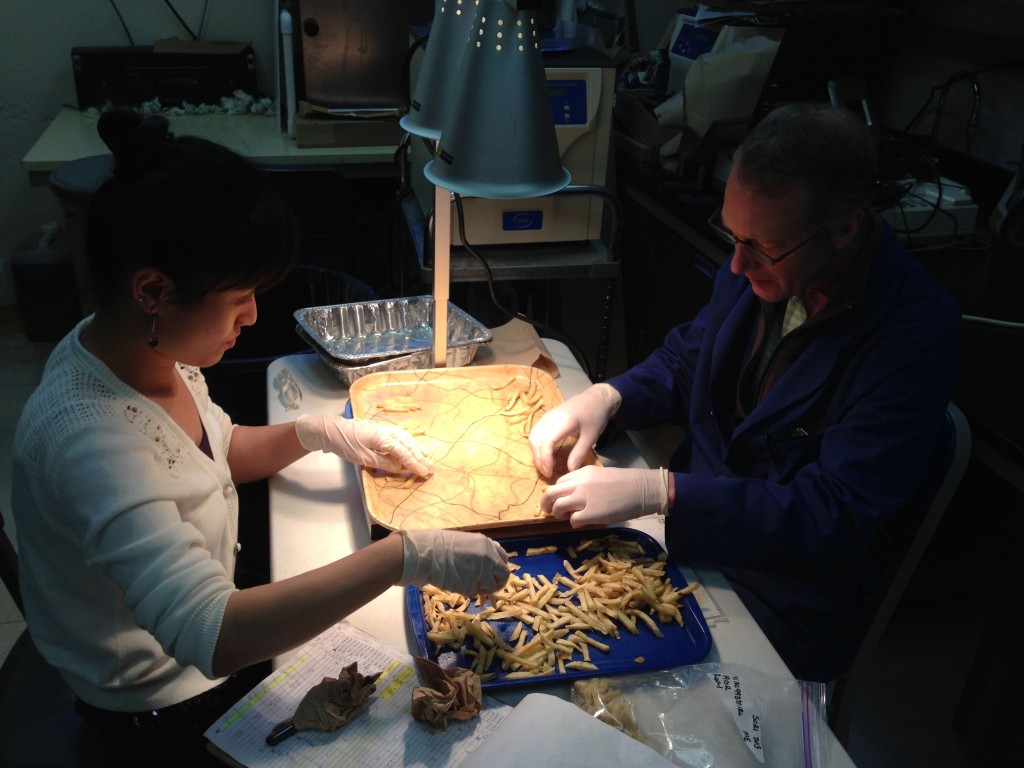Two weeks ago we broke new ground at UW-Madison by performing quality testing for French fries. This grew out of our participation in a nationwide effort to develop new varieties for the French fry market with lower acrylamide, which is a suspected carcinogen that forms when potatoes (and other starchy foods) are fried. It turns out that we have lots of breeding lines with lower acrylamide than current varieties–the problem is they don’t make good fries. This is not too surprising as we (and many other public breeding programs) have not been selecting for the textural quality traits required for success in the fry market. To remedy this situation, we are working with commercial fry processing companies and the USDA Potato Research Worksite in East Grand Forks, MN, to develop a screening protocol that can be piloted this winter in our breeding program.
Thanks to the work of postdoctoral researcher Dr. Yi Wang (pictured at left, below), the initial tests of this protocol began two weeks ago. Yi and I scored the incidence of defects due to color variation and internal texture problems in two dozen samples of fries. My colleague Dr. Paul Bethke (pictured at right, below) joined the effort this past week.

